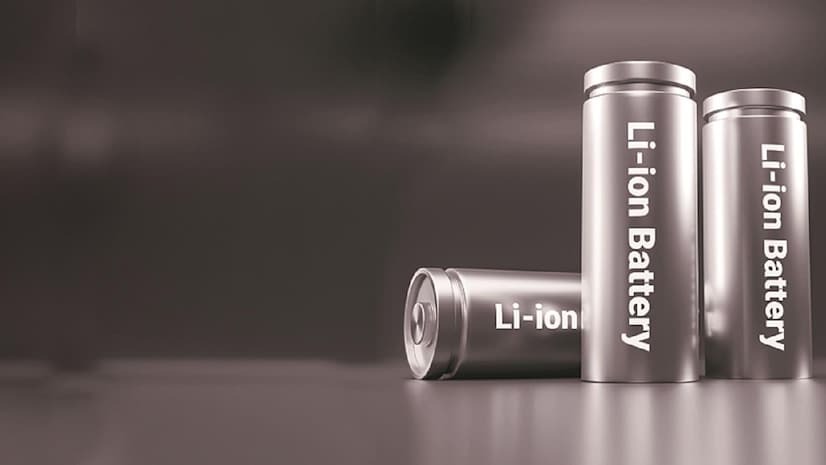IMARC Group’s “Dry Cell Battery Manufacturing Plant Project Report 2025: Industry Trends, Plant Setup, Machinery, Raw Materials, Investment Opportunities, Cost and Revenue” report provides a comprehensive guide on how to successfully set up a dry cell battery manufacturing plant. The report offers clarifications on various aspects, such as unit operations, raw material requirements, utility supply, infrastructural needs, machinery models, labour necessities, transportation timelines, packaging costs, etc.
In addition to the operational aspects, the report also provides in-depth insights into dry cell battery manufacturing process, project economics, encompassing vital aspects such as capital investments, project funding, operating expenses, income and expenditure projections, fixed and variable costs, direct and indirect expenses, expected ROI, net present value (NPV), profit and loss account, and thorough financial analysis, among other crucial metrics. With this comprehensive roadmap, entrepreneurs and stakeholders can make informed decisions and venture into a successful dry cell battery manufacturing unit.
Request a Sample Report: https://www.imarcgroup.com/dry-cell-battery-manufacturing-plant-project-report/requestsample
What is Dry Cell Battery?
A dry cell battery is a compact, portable power source that generates electricity through an electrochemical reaction involving a paste-like electrolyte, rather than a liquid. This design makes it safer and more practical for everyday use, particularly in handheld and household devices. A typical dry cell consists of a zinc anode, a manganese dioxide cathode, and an electrolyte paste—often ammonium chloride or zinc chloride. Unlike wet cells, dry cells are sealed, minimizing leakage and enhancing durability. They are commonly used in flashlights, remote controls, clocks, and toys due to their convenience and relatively low cost. The alkaline battery, a widely used type of dry cell, offers longer shelf life and higher energy output. The dry cell battery’s ability to deliver reliable power in a compact form factor has made it an essential component of modern portable electronics, and it continues to evolve to meet changing energy demands.
Market Trend and Drivers of Dry Cell Battery:
The dry cell battery market is being driven by a combination of technological advancements, increasing consumer demand for portable electronics, and the growing need for reliable off-grid power sources. As smartphones, cameras, remote controls, and wireless accessories become more integral to everyday life, the demand for compact, efficient, and long-lasting batteries continues to surge. Additionally, the global rise in urbanization and the proliferation of disposable devices in both developed and developing economies have contributed to the growth of the dry cell segment. Environmental concerns and consumer preferences are also shifting the market towards more eco-friendly and mercury-free dry cells. Moreover, advancements in alkaline and lithium-based chemistries have improved energy density and shelf life, encouraging their adoption in both consumer and industrial applications. The rise of e-commerce has further facilitated easy access to dry cells, boosting sales globally. With emerging economies expanding their access to electricity and electronics, the dry cell battery market is poised for continued, steady growth.
Key Aspects to Setup a Dry Cell Battery Plant:
- Location to Setup Plant
- Market Research
- Plant Layout
- Construction and Infrastructure
- Equipment/Machinery Procurement
- Documentation and Licenses
- Cost Analysis
Requirements to Setup a Facility:
- Funds
- Machinery
- Lands
Types of Costs to Setup a Factory:
- Land, Location and Site Development Cost
- Plant Layout Cost
- Machinery Requirements and Costs
- Raw Material Requirements and Costs
- Packaging Requirements and Costs
- Transportation Requirements and Costs
- Utility Requirements and Costs
- Human Resource Requirements and Costs
Project Economics:
- Capital Investments
- Operating Costs
- Expenditure Projections
- Revenue Projections
- Taxation and Depreciation
- Profit Projections
- Financial Analysis
Key Questions Answered in the Report:
- How has the dry cell battery market performed so far and how will it perform in the coming years?
- What is the market segmentation of the global dry cell battery market?
- What is the regional breakup of the global dry cell battery market?
- What are the price trends of various feedstocks in the dry cell battery industry?
- What is the structure of the dry cell battery industry and who are the key players?
- What are the various unit operations involved in a dry cell battery manufacturing plant?
- What is the total size of land required for setting up a dry cell battery manufacturing plant?
- What is the layout of a dry cell battery manufacturing plant?
- What are the machinery requirements for setting up a dry cell battery manufacturing plant?
- What are the raw material requirements for setting up a dry cell battery manufacturing plant?
- And more…
How IMARC Can Help?
IMARC Group is a global management consulting firm that helps the world’s most ambitious changemakers to create a lasting impact. The company provide a comprehensive suite of market entry and expansion services. IMARC offerings include thorough market assessment, feasibility studies, company incorporation assistance, factory setup support, regulatory approvals and licensing navigation, branding, marketing and sales strategies, competitive landscape and benchmarking analyses, pricing and cost research, and procurement research.
Services:
- Plant Setup
- Factoring Auditing
- Regulatory Approvals, and Licensing
- Company Incorporation
- Incubation Services
- Recruitment Services
- Marketing and Sales
Contact Us:
IMARC Group
134 N 4th St. Brooklyn, NY 11249, USA
Email: sales@imarcgroup.com
Tel No:(D) +91 120 433 0800
United States: +1-631-791-1145
 :
https://www.pinterest.com/andysmithsolution/
:
https://www.pinterest.com/andysmithsolution/

